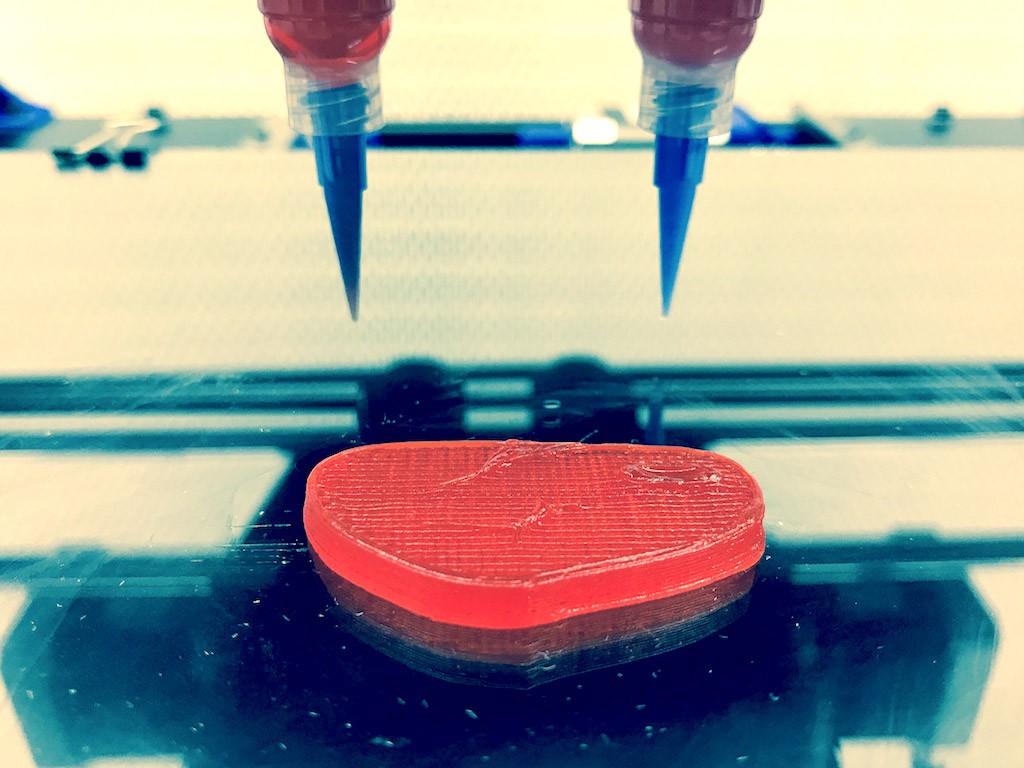3 Mins Read
Spanish food tech startup Novameat develops vegan-friendly 3D-printed “meat” using only plant-based proteins. The company first shot to fame in 2018 when it debuted the world’s first 3D-printed plant-based steak, and it has since managed to expand and print vegan chicken and fish fillet. Thanks to a recent round of funding, the company hopes to enhance its scaffolding technology to better replicate the sensory properties of meat. Hoping to launch large-scale 3D-printed vegan meat production in the future, the startup presents one of the most innovative food tech solutions in the gear up to fight the heavy impact of industrial livestock farming that is at the crux of our unsustainable global food system.
Founded in 2018, Novameat showcased the first 3D-printed meat-free steak made from only plant ingredients, and has now gone on to create other vegan 3D-printed meat alternatives such as chicken and fish. While many food tech startups have focused on creating plant-based alternatives that imitates burgers or meatballs, none of the offerings have yet reproduced a replica of fibrous flesh-like meat, such as steak or chicken breast.
Through a combination of tissue engineering and technology that allows for micro-structured tri-dimensional 3D bioprinting, the company has managed to mimic the same consistency, appearance and nutritional properties as animal meat products using protein from rice, peas and seaweed. Even the colouring used to enhance the meat-like appearance of the meat analogue is plant-based, such as paella colourant in the food paste for steak.
Italian bio-engineer and founder of Novameat Giuseppie Scionti was initially inspired due to the lack of “fleshy” meat alternatives on the market and hopes that his innovation that fills this gap can encourage a widespread shift away from traditional animal farming – an unsustainable industry that is driving climate change. The animal livestock industry accounts for 14.5% of the total greenhouse gas emissions globally, more than all of the transport sector combined. Beyond the massive carbon emissions, the industry uses up huge amounts of water, land and has eroded our topsoil, leading to a number of negative consequences including threatening wildlife and human food security.
“If we continue with the current system, in the future there will be little change of having the resources to distribute food to everyone…Finding another way of producing healthy and economic food that contains all the fundamental nutrients will help us to better manage our planet’s food resources,” said Scionti.
The company has caught the keen eyes of institutional investors, including New Crop Capital, a venture firm that has backed other food tech startups like Beyond Meat and Zero Egg. The company hopes to use new funds to further accelerate its technology for other fibrous meat replacements. They have since developed 3D-printed chicken breasts and fish fillets, that looks and tastes just like meat but is free from any animal-derived ingredients. Novameat also hopes to reduce manufacturing time and costs by rolling out large-scale production in the future. As of right now, the company can print a 100 gram steak in half an hour.
Motivated by the same reasons – to help solve our current climate crisis and fix our unsustainable global food system – another company in Japan is working on 3D-printed food technology. Open Meals has 3D-printed pixelated sushi, which will be launching in a Tokyo restaurant Sushi Singularity by 2020.
Images courtesy of Novameat.




